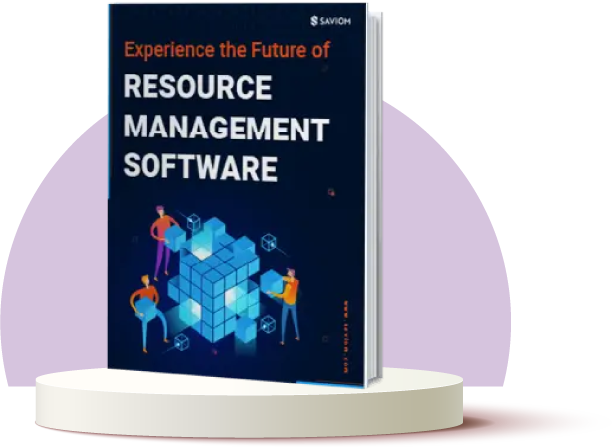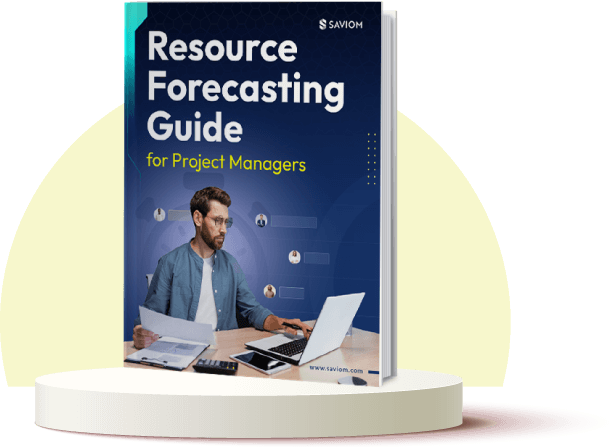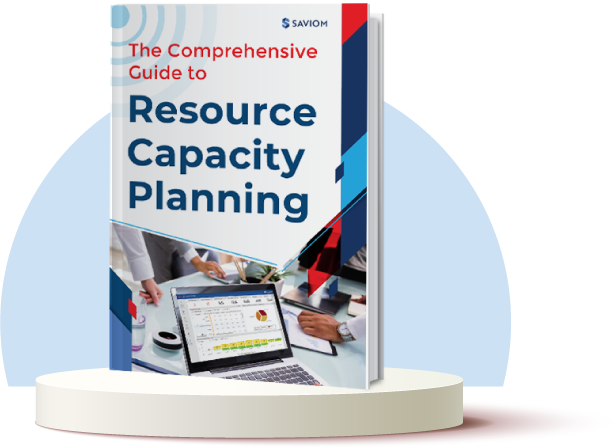Imagine you’re a part of a rapidly growing tech company, working on releasing a groundbreaking product in the next twelve months. Recently, the company lost a few key software developers and marketers, making it difficult to maintain progress while trying to recruit replacements.
Without a formalized recruitment and onboarding process, the firm struggles to fill key roles quickly, leading to delays and putting increased pressure on the remaining staff. This scenario highlights the consequences of not having a well-structured talent acquisition strategy.
By developing a clear and concise talent acquisition strategy, companies can anticipate immediate and future skill requirements, streamline recruitment efforts, and build a versatile workforce that supports long-term strategic business objectives.
In this blog, we’ll explore the significance of a talent acquisition strategy and how you can create a robust framework for your business.
But first, let’s look into the basics.
What is a Talent Acquisition Strategy?
A talent acquisition strategy is a comprehensive plan that outlines how organizations will identify and recruit top talent. It involves planning, sourcing, assessing, hiring, and onboarding qualified individuals into suitable positions within the organization. Further, it applies to all forms of employee recruitment, including full-time, part-time, and contracts.
An effective talent acquisition strategy begins with identifying the skill and capacity gaps, followed by planning and sourcing employees ahead of the curve. In addition, building a talent acquisition strategy helps standardize and streamline hiring and onboarding processes across the organization. This helps ascertain a seamless employee experience right from the beginning and contributes to long-term retention.
Now that we know talent acquisition definition, let’s look at its various types.
Types of Talent Acquisition Strategy
There are two types of talent acquisition strategies. Let’s understand them in detail.
Short-Term Talent Acquisition Strategy
Short-term strategies focus on filling immediate gaps in the organizational workforce. Companies often use this approach during seasonal spikes, project-based work, or unexpected employee turnover. For example, a retail chain might hire temporary staff during the holiday season to manage the increased foot traffic.
Long-Term Talent Acquisition Strategy
Long-term strategies focus on building a talent pipeline that aligns with future business goals. Organizations use this approach to plan for growth, leadership roles, or anticipated retirements. For instance, a tech company may partner with universities to attract fresh talent through internships, ensuring a steady flow of candidates as the company expands.
Now, let’s move towards the benefits of having a robust talent acquisition plan in place.
Read More: How to Create an Effective Hiring Strategy?
Benefits of Talent Acquisition for Organizations
Talent acquisition is a critical business function that ensures companies have the right skills and expertise for current and upcoming opportunities. Furthermore, an efficient talent acquisition strategy helps firms identify and attract high-caliber professionals from the labor market who can contribute to the organization’s success.
In addition to filling immediate gaps, talent acquisition is vital in long-term workforce planning. Such a proactive approach to recruitment helps organizations anticipate future needs and build a talent pipeline, which drastically reduces time-to-hire for critical positions.
Lastly, talent acquisition impacts an organization’s culture and brand. Companies prioritizing hiring for both skill and cultural fit tend to foster a more cohesive and motivated workforce. Moreover, a strong employer brand that highlights a positive work environment, growth opportunities, and social responsibility can attract top candidates. This leads to better retention rates and boosts business efficiency.
Now, let’s understand the nuanced difference between talent acquisition vs. Recruitment.
Talent Acquisition vs. Recruitment: What is the Difference?
Understanding the key differences between recruitment and talent acquisition can help organizations refine their hiring processes and align them with their strategic goals.
Here’s a breakdown of the key differences –
| Parameters | Talent Acquisition | Recruitment |
|---|---|---|
| Definition | A strategic process focused on identifying, attracting, and retaining top talent that aligns with an organization’s long-term goals and culture. | A tactical, short-term process aimed at filling immediate job vacancies by sourcing and hiring suitable candidates. |
| Primary Focus | Building a talent pipeline and developing relationships with potential candidates. | Filling current job vacancies and fulfilling staffing needs. |
| Approach | Proactive, involves strategic planning. | Reactive, triggered by immediate hiring needs. |
| Candidate Pool | Focuses on passive candidates and building a talent network. | Primarily targets active job seekers. |
| Examples | Creating a talent pipeline for leadership positions in anticipation of future company growth. | Hiring a software developer to replace someone who just left. |
Here are some ways firms can create the best talent acquisition strategy.
8 Effective Ways to Create a Proper Talent Acquisition Strategy
A robust talent acquisition strategy framework helps talent managers optimize the employee lifecycle, from recruitment to exit, and minimize the hiring/firing cycle.
Here are some ways firms can create the best talent acquisition strategy.
Assess the Skills Demands & Time Period for Hiring
While formulating a talent acquisition strategy framework, managers must identify the skill requirements, analyze the capacity v/s demand gap, understand if they are one-time or recurrent, and define them for the HR department. Talent managers must also assess both immediate and future skill needs and take action accordingly.
For short-term demands, they can focus on filling gaps through temporary hires, contractors, or freelancers. This ensures projects stay on track without long-term commitments. For long-term goals, talent managers should consider future growth and business objectives, ensuring that permanent hires bring the skills needed for the company’s success.
Read More: What is Workforce Planning and How to Master it for Business Efficiency?
Develop a Clear Job Description That Emphasizes Role Details
A job description is an essential aspect of hiring, as it helps candidates determine whether they are suitable for the position. It serves as a key tool in setting expectations from the start, ensuring clarity for both parties. Therefore, employers need to ensure that job descriptions are accurate, complete, and up to date.
It should include the job title, skill requirements, responsibilities, experience, and remuneration. The job description helps candidates know whether the position aligns with their qualifications and clarifies any confusion about the role. Thus, the organization will receive only quality applications, reducing the assessment time.
Focus on Better Employer Branding to Gain a Competitive Edge
72% of recruiting leaders worldwide agree that employer brands significantly impact hiring.
Employer branding plays a significant role in the success of a talent acquisition strategy, as it shapes how candidates perceive the organization. A strong brand can set a company apart in the job market and attract top talent. Therefore, building a unique and authentic brand is necessary to remain competitive.
Organizations can survey their existing employees and draw conclusions from their suggestions on job portals and social media. They can describe their work culture and post employee testimonials on their social media platforms. When candidates see a positive work environment, they will gravitate toward the organization.
Establish a Separate Selection Process for Freshers V/S Lateral Hires
Similar to how different strategies are required for short-term and long-term employees, a separate selection process is necessary to hire freshers and experienced candidates. An experienced candidate will have better industry insights through their long tenure at previous companies. In contrast, freshers will have an untapped talent that will be crucial for your organization.
Therefore, it is essential to create different assessment processes for candidates. For example, for freshers, the assessment and interview could be based on analyzing their basic knowledge of their job requirements and the necessary skills. For experienced candidates, employers can look into their past work and request samples.
Use Online Job Portals & Empaneled Vendors for a Scalable Recruitment Process
Online job portals provide access to a broad range of candidates, making the recruitment process faster and more efficient. They allow companies to post job openings and reach thousands of potential applicants in a short amount of time. Further, by using filters and search criteria, recruiters can quickly identify and communicate with the most suitable candidates for a position.
On the other hand, empaneled vendors offer specialized recruitment services, handling tasks like background checks, initial screenings, and shortlisting candidates. In addition, the organization is relieved of the entire recruitment process as they collaborate with third parties to manage specific recruitment steps that would otherwise consume internal resources. Their expertise ensures that only qualified candidates are passed along for further consideration.
Read More: What is a Contingent Workforce, and Why an Organization Needs It?
Encourage Employee Referrals to Get Potential Job Applicants
Organizations can ask their existing employees to recommend prospective employees from their networks. Since they are already familiar with the organization’s culture, mission, and vision, they can easily recommend candidates who make the best fit for your company. It also helps to reduce time spent on shortlisting resumes and hiring costs.
According to SHRM, the average length of the hiring process is 36 days. However, this can also be reduced if applicants are employed through referrals. It will also benefit the candidate to quickly adapt to the work culture since they already know at least one person in the company. This further strengthens the employer-employee relationship and fosters trust between them.
Check Quality of Hire, Cost & Employment Terms Before Final Selection
Stringent scrutiny is imperative to ensure that the right employee is hired on the right terms, or else it may lead to delays and project budget overruns. Employers should request previous work samples or conduct a pre-employment assessment to examine their skills and then shortlist accordingly.
HR managers must also effectively communicate the salary and other benefits to align with their expectations. This transparency helps avoid any misunderstandings that may arise later. Most importantly, while hiring a contractual or temporary employee, discuss the cost and employment terms in advance to prevent future conflicts.
Leverage Talent Management Software to Streamline the Process
Talent management software helps streamline hiring by automating tasks like resume screening and interview scheduling. It centralizes candidate data, making it easier for HR teams to manage the process efficiently. This further allows them to focus more on engaging the right candidates rather than getting involved in administrative tasks.
It also provides insights into recruitment performance, helping managers track and improve their strategies. For example, a consulting firm might use software to identify which job boards bring in the best candidates, allowing them to recruit employees effectively. Also, leveraging these technology trends leads to smarter hiring decisions and a more efficient process overall.
Read More: Talent Management Software – How to Choose the Best One for Your Business?
Conclusion
It is now clear that effective talent acquisition strategies help an organization recruit top talent. By implementing the techniques mentioned in this article, you can proactively scout the best talent and secure your future goals, thus creating an optimized workforce. This will ultimately improve project outcomes and increase the firm’s profitability.
So, are you ready to implement the best talent acquisition strategy and build a robust talent pool in your firm?
The Glossary
Read More: Glossary of Resource Workforce Planning, Scheduling and Management
The SAVIOM Solution
SAVIOM is undoubtedly the market leader in offering the most powerful and configurable Enterprise Resource Management Solution. Having more than 20 years of experience, this Australian-based MNC has a global presence in over 50 countries. It is also popular with more than 100 customers and helps them to achieve their business goals. SAVIOM also has products for project portfolio management, professional service automation, and workforce planning software, which can be easily customized per business requirements.











